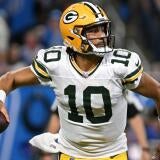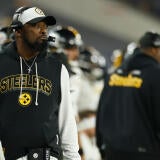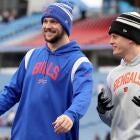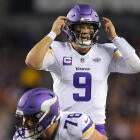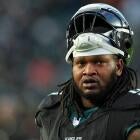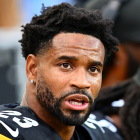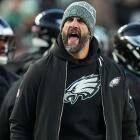NFC East Reset: Eagles, Giants, Skins go the Cowboys way to maximize QBs
With free agency and the draft in books, it's time to survey the NFC East

Way back in 2009, Dallas Cowboys owner Jerry Jones declared for the first time that his intention was to build an offense that was "Romo-friendly," stating that it "means let's utilize [Tony Romo's] skills to the fullest and make sure everything we do maximizes his abilities." It was a phrase that was repeated often between the time Jerry first mentioned it and when everything the Cowboys planned came to fruition in 2014, when Romo had the best season of his career, leading the NFL in completion percentage, yards per attempt, passer rating and QBR.
That Romo-friendly offense struggled when Romo broke his collarbone for the second and third time in 2015, but it took off once again under the leadership of Dak Prescott after Romo fractured his back during the 2016 preseason. Now, the Cowboys' focus has turned to building a Prescott-friendly offense.
No shortage of options for Prescott
Much of the basis for that Prescott-friendly offense is the same as it was for Romo. The Cowboys lost two starters from the NFL's best offensive line (Ronald Leary to the Denver Broncos, Doug Free to retirement), but with All-Pros Tyron Smith, Travis Frederick and Zack Martin on hand, Prescott should still be very well-protected in the pocket. Whether La'el Collins is joined as a starter by Chaz Green, Byron Bell or Jonathan Cooper, this should still remain one of the best mauling units in the league.
That group will clear the way for Ezekiel Elliott, who only led the NFL in rushing during his rookie season despite sitting out the final game. Elliott and Prescott are a perfect fit in the backfield, a sort of new-age Russell Wilson and Marshawn Lynch. Both can operate from under center or out of the shotgun, and their skill sets play well off each other. The Cowboys barely broke out their read-option game last season, preferring to save it for when they got down to the goal line; if they use more of it this season, it should be even more successful.
Prescott's passing weapons include a couple of Romo favorites in ageless tight end Jason Witten (who last year exceeded 60 catches and 650 receiving yards for the 13th straight season) and All-Pro wideout Dez Bryant, with whom he finally developed chemistry down the stretch after Bryant returned from a hairline fracture in his knee. Dez had 34 catches for 517 yards and six scores during the final seven regular-season games where Prescott played more than one series, then tacked on nine for 132 yards and two touchdowns during the Cowboys' near-comeback against the Packers in the playoffs.
Prescott turned shifty slot man Cole Beasley into a more dangerous weapon than Romo ever did, helping the former undrafted free agent reach career highs in targets, catches, receiving yards and touchdowns. Prescott loves the short, quick pass that puts his man in position to make hay after the catch, so the Cowboys went out and drafted themselves a Beasley clone in North Carolina slot man Ryan Switzer. With Terrance Williams unexpectedly returning to the fold on a below-market deal, flashy Ohio State wideout Noah Brown (a seventh-round pick this year) competing with Brice Butler for a back-end roster spot, and former Baylor basketball player Rico Gathers expected to see snaps at tight end after dominating on the practice squad last season, it's easy to see the Cowboys' offense once again being one of the most successful in the league.
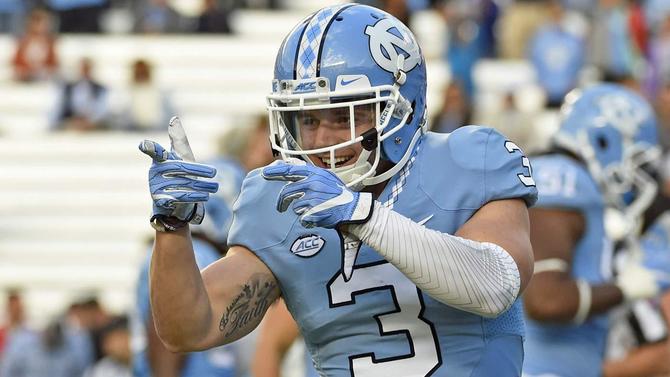
Copying the Cowboys' blueprint
The Cowboys' division rivals must have taken this success to heart, because they went out this offseason and put forth a great effort to emulate it -- or at least, they sort of did.
The Philadelphia Eagles have an entrenched young quarterback of their own. They traded up twice last offseason to get the No. 2 pick in the 2016 draft, which they used on North Dakota State's Carson Wentz. The team swore up and down that Wentz would spend the season as the No. 3 QB behind Sam Bradford and Chase Daniel, but then Teddy Bridgewater got hurt, the Eagles shipped Bradford to the Vikes, and Doug Pederson started Wentz for all 16 games.
He started off white hot as the Eagles protected him well and schemed him into advantageous situations, but as the year went on, he fell off the map. His protection got significantly worse when Lane Johnson left the lineup due to a suspension, and the Eagles' corps of weapons began to show its true colors as the weeks passed as well.
This offseason, the Eagles did everything they could to make their offense more Wentz-friendly. The offensive line that protected him so well will return intact, and Pederson seems likely to run the same offense that has been putting Andy Reid's quarterbacks in position to succeed for years on end -- the same one the Eagles ran last season. This time around, Wentz will have some better options to get the ball to.
In addition to Ryan Mathews, Darren Sproles and Wendell Smallwood, the Eagles will also have former San Diego State dynamo Donnel Pumphrey in the backfield. If you don't know who he is, well: He's the all-time leading rusher in FBS/Division 1-A history. He's also an accomplished receiver out of the backfield and could potentially move into a Sproles-like role as the latter player ages out of being able to handle a bigger snap load.

Not only that, but the Eagles went out and got some more receivers that hopefully won't be quite as drop-happy as the guys Wentz was throwing to last season. Alshon Jeffery has struggled staying on the field over the past couple seasons (he has been alternately injured and suspended) but he's the kind of physical, ball-snatching wideout that turns incomplete passes into touchdowns when he's healthy and at his best. It wasn't that long ago that he had 174 catches for 2,554 yards and 17 touchdowns across his second and third seasons.
The Eagles also signed Torrey Smith, who, while he was basically in wide receiver no-man's land the past couple years with the 49ers, can still take the top off the defense and should make for a good fit with Wentz's cannon arm. Wentz didn't throw downfield very often last season, but that arm strength was consistently mentioned as one of his best attributes in the pre-draft process and we saw it at times when he was a rookie as well.
Philly also drafted Mack Hollins, a former UNC deep threat, to work behind that duo and incumbent top target Jordan Matthews. Add in tight end Zach Ertz, now 26 years old and coming off back-to-back seasons with at least 75 catches and 800 receiving yards, and well, the offense is much more Wentz-friendly indeed.
Eli gets some new weapons
Up in New Jersey, the Giants might have drafted the player they hope will be Eli Manning's eventual successor (former California quarterback Davis Webb), but they also expended a bunch of resources to put him in better position to succeed as his career winds down. The G-Men finished last season 25th in yards and 26th in points, and it's clear they felt the need to shake things up on that side of the ball so it didn't happen again.
Victor Cruz was cast aside after he failed to resemble the player he was before his knee injury, and the Giants brought in several reinforcements in his place. They already had Odell Beckham Jr. to make plays all over the field and Sterling Shepard to work the slot, so Jerry Reese went out and got Manning a big, physical possession receiver in Brandon Marshall and a flexible, fast-twitch tight end to work the in-between areas in first-round pick Evan Engram. The Giants can now test every inch of the field with their passing game, including the flat and swing areas with Paul Perkins and Shane Vereen now getting all of the backfield snaps with Rashad Jennings no longer in the picture.

The question, of course, is whether Manning will ever be upright long enough to fire the ball to his improved cadre of pass-catchers. New York's offensive line was dreadful last season, and the only move the team made to fortify it was signing D.J. Fluker away from the Chargers -- and he seems likely to be a backup. Weston Richburg and Justin Pugh are rock-solid inside, but the Giants better get the big steps forward they're counting on from tackles Ereck Flowers and Bobby Hart, or all the investment they made in getting Manning better targets will be for naught. That duo allowed more combined pressures than any tackle tandem in football last season, per Pro Football Focus. That can't happen again if this offensive experiment is going to work.
Washington reloads
Washington had a lot of drama surrounding its quarterback situation again this offseason. Kirk Cousins was franchise-tagged for the second consecutive year, and even though he signed the $24 million tender, he has been the subject of constant trade rumors throughout the offseason. He seems to have the confidence of coach Jay Gruden, but maybe not the entire front office just yet.
Still, the Washington offense should once again be loaded up with weapons to help Cousins find success. There'll just be some different weapons than there were last season. Pierre Garcon reunited with Kyle Shanahan in San Francisco and DeSean Jackson went to Tampa to star on "Hard Knocks" with Jameis Winston and Mike Evans. Washington foresaw this potential issue last year, and it's a large part of the reason why they drafted former TCU standout Josh Doctson with their 2016 first-round pick. Doctson sat out much of his rookie year with injury issues and needed some time getting up to speed anyway, but he should factor heavily into the mix this season.
A chunk of the cap room left over after the Garcon and Jackson departures was used to land Terrelle Pryor, who shined in his first extended run as a wideout with Cleveland last season. Along with slot man Jamison Crowder, that gives Cousins three perimeter targets that all test the defense in very different ways. The monster tight end duo of Jordan Reed and Vernon Davis will also return, putting even more pressure on opposing linebackers and safeties with their combinations of size, speed and athleticism.
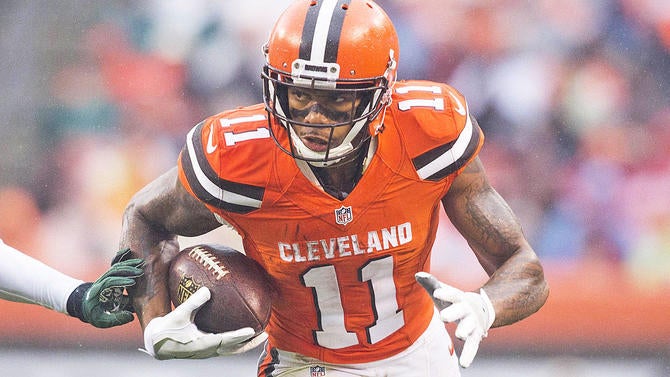
Cousins also has Chris Thompson coming out of the backfield, a shifty pass-catching back in the mold of Detroit's Theo Riddick. Rob Kelley should get more extended run as the lead ball-carrier, and if he falters, Washington can turn to rookie Samaje Perine -- the less-heralded and less-controversial former Oklahoma running back -- who they plucked in the fourth round of this year's draft.
Working behind one of the best offensive lines in football and with a coterie of options at his disposal, Cousins should be well-positioned to have another good contract year. He's the only QB in the division without a long-term commitment, but at least his team, like its division rivals, is committed to making sure he's surrounded with the type of players that will amplify his skills.


